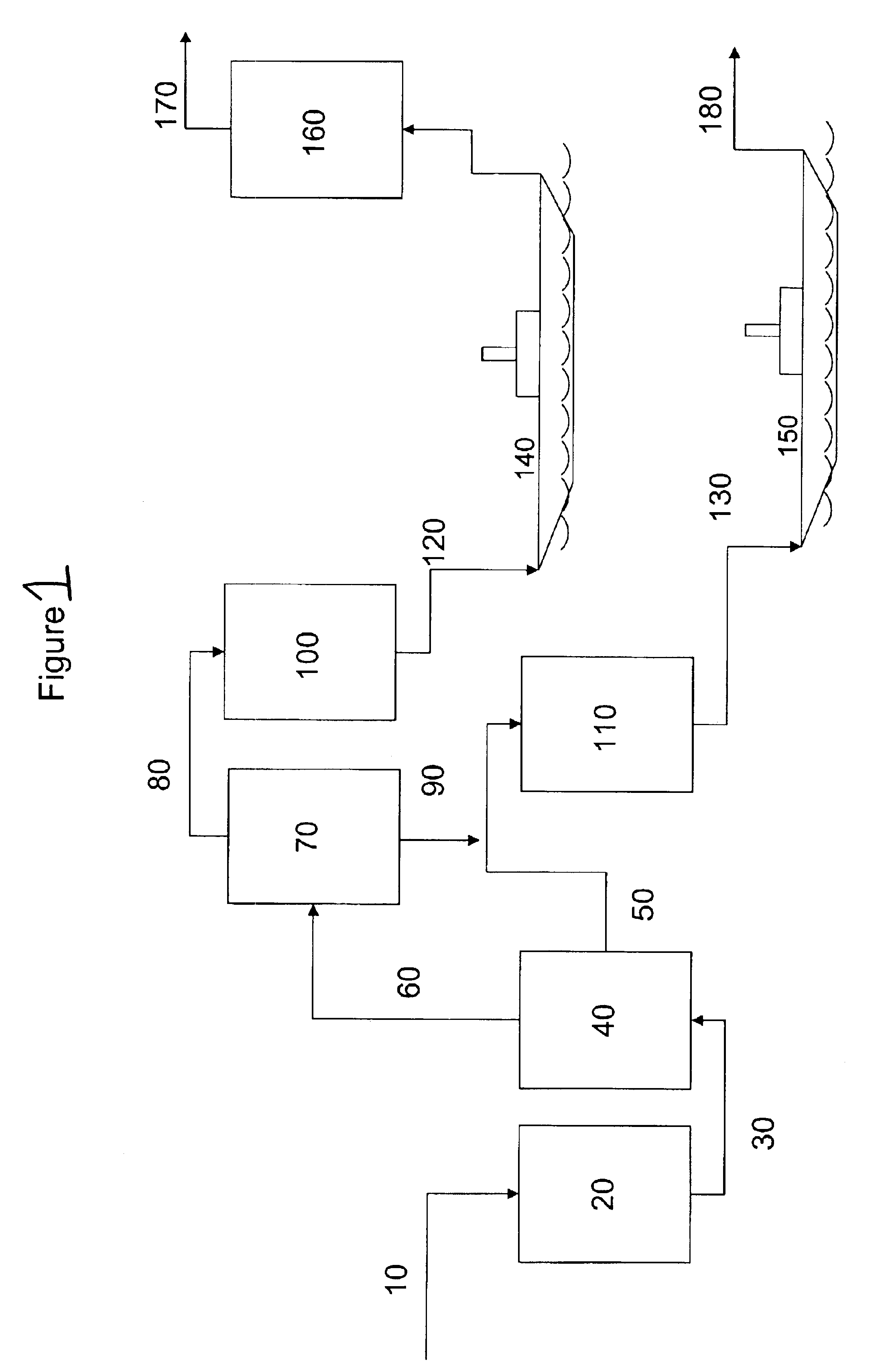Production of stable olefinic fischer tropsch fuels with minimum hydrogen consumption
a technology of olefinic fischer tropsch and low sulfur, which is applied in the direction of oxygen-containing compound preparation, hydrogen oil cracking process, oxygen-containing compound purification/separation, etc., can solve the problem of low stability of fischer tropsch products, the use of expensive hydrogen and high pressure facilities, and the use of expensive high pressure compressors. problems, etc., to achieve the critical issue of fuel stability. the problem of the fuel produced
- Summary
- Abstract
- Description
- Claims
- Application Information
AI Technical Summary
Benefits of technology
Problems solved by technology
Method used
Image
Examples
example 1
Fischer-Tropsch Olefinic Distillates
[0084]Two olefinic distillates prepared by the Fischer-Tropsch process were obtained. The first (Feedstock A) was prepared by use of a iron catalyst. The second (Feedstock B) was prepared by use of an cobalt catalyst. The Fischer-Tropsch process used to prepare both feeds was operated in the slurry phase. Properties of the two feeds are shown below in Table 4 to follow.
[0085]Feedstock A contains significant amounts of dissolved iron and is also acidic. It has a significantly poorer corrosion rating.
[0086]For purposes of this invention, Feedstock B is preferable. It contains fewer oxygenates, has a lower acid content, and is less corrosive. Thus it is preferable to prepare olefinic distillate for use in blended fuels from cobalt catalysts rather than iron catalysts.
[0087]A modified version of ASTM D6550 (Standard Test Method for the Determination of the Olefin Content of Gasolines by Supercritical Fluid Chromatography—SFC) was used to determine the...
example 2
Dehydration Catalysts
[0095]Commercial Silica Alumina and Alumina extrudates were evaluated for dehydration of the Olefinic Naphthas. Properties of the extrudates are shown below in Table 1.
[0096]
TABLE 1ExtrudateSilica AluminaAluminaMethod of manufacture89% silica aluminaAlumina extrudatepowder bound with11% aluminaParticle Density, gm / cm30.9591.0445Skeletal Density, gm / cm32.837BET Surface area, m2 / g416217Geometric Average pore size,54101AngstromsMacropore volume, cc / g0.14200.0032(1000+ Angstroms)Total pore volume, cc / g0.6360.669
example 3
Dehydration Over Silica Alumina
[0097]The dehydration experiments were performed in one inch downflow reactors without added gas or liquid recycle. The catalyst volume was 120 cc.
[0098]The Fe-based condensate (Feed A) was treated with the commercial silica alumina. This catalyst was tested at 50 psig and temperature of 480° F., 580° F., and 680° F. with space velocity at one LHSV and three LHSV. At one LHSV, the total olefin content was 69-70% at all three temperatures, which indicated full conversion of the oxygenates. At 680° F. some cracking was observed by the light product yields: total C4- was 1.2% and C5-290° F. was 25% (vs. 20% in the feedstock). At three LHSV and 480° F. and 580° F. the total olefins were lower at 53-55%. High dehydration activity was obtained at 680° F. and three LHSV with total olefin content of 69%. GCMS data indicated that significant amount of 1-olefin was converted to internal or branched olefins. The total olefins at 480° F. was 69% initially but was ...
PUM
| Property | Measurement | Unit |
|---|---|---|
| Temperature | aaaaa | aaaaa |
| Temperature | aaaaa | aaaaa |
| Fraction | aaaaa | aaaaa |
Abstract
Description
Claims
Application Information
 Login to View More
Login to View More - R&D
- Intellectual Property
- Life Sciences
- Materials
- Tech Scout
- Unparalleled Data Quality
- Higher Quality Content
- 60% Fewer Hallucinations
Browse by: Latest US Patents, China's latest patents, Technical Efficacy Thesaurus, Application Domain, Technology Topic, Popular Technical Reports.
© 2025 PatSnap. All rights reserved.Legal|Privacy policy|Modern Slavery Act Transparency Statement|Sitemap|About US| Contact US: help@patsnap.com

